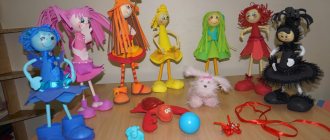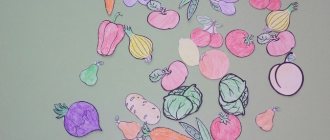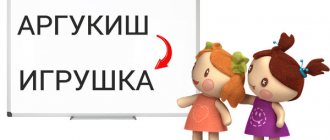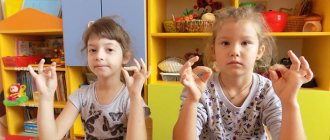At the present stage, preschool education plays a big role. Even more and more demands are placed on children of senior preschool age every year, especially in senior preschool age before directly entering school. Children must learn to comprehend educational information before they set foot in school.
Often, children of senior preschool age are prepared for school by instilling in them general and special knowledge, certain skills and certain skills. But they do not attach importance to the formation of their cognitive mental processes, and first of all, perception. But this is no less important. And maybe even the basis for successful schooling. After all, if a child of senior preschool age does not learn to perceive information, he will not be able to comprehend, process and evaluate it. The child will not master the school material and curriculum; his knowledge will not be formed.
Mechanism and types of perception
For the full development and effective learning of a child, a sufficient level of development of perception is necessary. It is the basis for the formation of other cognitive processes (memory, attention, thinking, speech and imagination). How does the process of perception occur?
- The world around us consists of various objects and phenomena that can be seen, heard, touched, tasted, smelled.
- With the help of our senses we learn about what an object is. For example, an orange has the following properties: round, orange, smooth, with small dimples on the peel, sour, and has a specific citrus smell.
- Information from the senses enters the brain, where individual sensations are combined into a holistic “picture” - perception.
- Perception is greatly influenced by accumulated life experience. If a child has already seen and eaten an orange, he does not need to taste it to guess what it is.
Classification of types of perception:
- Visual perception allows you to obtain a visual image of an object, as well as study its details;
- Auditory perception makes it possible to understand speech, recognize various sounds of nature, household noises and hear music;
- Tactile perception - cognition of objects through touch;
- Olfactory perception – recognition of odors;
- Taste perception – receiving information from taste buds (perception of sweet, salty, sour and bitter).
Most experts believe that each of us has a leading channel for receiving “data” about the world (usually vision, hearing or touch). Pay attention to the form in which your baby absorbs information better - this should be the main one in his learning.
PERCEPTUAL PSYCHOPHYSICS
The stimulus completely determines the image - it has everything. But the subject's activity is necessary to differentiate the stimulus. Subject-oriented theories:
theory of unconscious inferences G.L.F. Helmholtz; Gregory's theory of perceptual hypotheses; Bruner's theory of perception as a categorization process.
The subject himself builds his own perceptual image. Perception is the process of solving a problem.
G.L.F. Helmholtz: with unusual stimulation - an inference about the nature of the stimulus. We select what is useful. This process is the instantaneous nature of the unconscious: 1) there is no reliance on conscious knowledge; 2) irresistibility; 3) follows from past experience (by analogy); 4) the influence of habit, training.
Gregory: when encountering a stimulus, perception puts forward a number of possible interpretations of the image - object-hypotheses. Hypotheses must be plausible. They are limited by past experience. Inconsistency of hypotheses causes an affective reaction.
Bruner: There are perceptual categories - a set of rules for combining objects: generalized ideas about an object stored in past experience. Perception is the solution to the problem of classification, assignment to a category (inference operation). Subject activity.
The categories differ in their readiness (minimizing surprises, maximizing success). Categorization depends on motivation. A measure of the truth of perception: correspondence between the readiness of the category and the probability of real events.
Process of perception: presentation of an object for a very short time - primary categorization.
The subject already has a perceptual readiness to perceive a particular object - a category. The category’s readiness to be discovered, to be transferred from past experience to the present.
Search for signs. If they confirm the category, then a confirmatory check.
Making the final decision. Closedness to additional features.
Possible perceptual conflict (illusions).
Perceptual adaptation - pseudoscope. The world loses its objectivity before the subject begins to act.
Orientation towards interaction, cognition as an understanding of reality: the source of image construction is contact with the object;
• no importance is attached to past experience - only the present;
• perception and thinking become independent processes.
Gibson's ecological theory:
The world is an ecological niche, the habitat of the subject (the subject and the world are not separated). The act of perception is not two-phase (receiving a retinal image and processing information) - there is no need to interpret anything! Perception is not thinking. You must be able to extract information in direct contact with the world. The world has everything necessary for perception.
We perceive not with the retina, but with the whole body - the principle is built-in. Perception is a psychosomatic act of a living observer. Retrieval of information is an active and continuous process. The information is non-specific regarding receptors (cf. Müller).
Peculiarities of perception in early preschool age (3-4 years)
The perception of 3-4 year old children is characterized by specificity and lack of clarity. The main parameters of perception in early preschool age are color, shape and size. Most often, children pay attention to the most striking of these signs, and the rest of the details are guessed by them. For example, seeing buttons with numbers on the TV remote control, children often decide that it is a telephone. It is interesting that three-year-olds do not recognize even the closest people if they are dressed in carnival costumes. At this age, children clearly distinguish primary colors (red, yellow, blue, green). Little-known shades are perceived as unimportant signs, and therefore are often simply ignored. However, kids learn quickly and remember everything on the fly. The more color standards you introduce your child to, the brighter the baby’s perception will be. Sometimes children evaluate the color characteristics of objects as “beautiful” and “ugly”, so in drawing you can see the child’s color preferences, and not real images of objects.
The properties of objects for younger preschoolers are inseparable from the things themselves, so they are firmly fixed in perception. For example, a baby knows that a cucumber is always green, and can call zucchini, avocado, and green beans cucumbers.
In children of this age, their perception of space is formed through actions with objects. A 3-year-old child is just beginning to distinguish between the concepts of “far” and “close”, so he has difficulty assessing the size of distant objects. For example, looking at the panorama of the city, a child may well think that the houses are toy. To develop the baby’s spatial understanding, you need to pay his attention to his own body (the child will quickly remember that the legs are below, the head is above, and the arms are at the side), and also more often give the child requests indicating the direction (for example, “turn right” , “take the candy from the top shelf” and so on).
How do children of middle preschool age (4-5 years old) perceive the world?
By the age of 5, children achieve significant success in their ability to perceive various parameters of the world around them:
- There are 7 or more colors;
- Have an idea of light and dark tones, “warm” and “cold” shades;
- Know the basic geometric shapes (circle, square, triangle, rectangle);
- Can compare objects by size (large, smaller, small);
- They begin to form the concept of time (today, yesterday, tomorrow, minutes, hours, days, weeks), but they are not yet able to apply knowledge about these abstract concepts into the life of a four-year-old;
- The perception of other people depends on their popularity in society and their relationship with the baby. Mom will always be perceived by the baby as the kindest and most beautiful.
Color or shape - what is more important for a child?
With the development of visual perception, the perception of shape and color becomes important. Psychologists are still arguing which feature is the main one for the perception of an object in the process of their sensory cognition by preschoolers. Some scientists were of the opinion that until the age of 7, children are “form blind.” Soviet researchers were able to show that in the perception of a preschooler, shape not only plays a leading role, but also discovered several conditions that make it easier to understand the complex relationship between the color and shape of an object. Studying the perception of preschoolers, scientists found that the color of an object becomes an identifying feature for a child only when the stronger feature of shape has not received a signaling value for some reason. These facts are especially pronounced when the baby perceives unfamiliar objects. The task assigned to the child is also important. If you need to lay out a pattern of single-colored figures, then it will be guided by the shape, and if you need to hide a figure of a similar color on a colored background, then color will become the predominant factor. There are tasks where children have to focus on both signs at once. If in the proposed task there is no conflict between shape and color, then younger preschoolers begin to correctly navigate the shape of an object suggested by a silhouette or just an outline. Having understood the names of geometric figures, kids easily operate with the corresponding forms, finding them in familiar objects, that is, the form here is already distracted from the subject content. They define a door as a rectangle, a globe as a ball, a funnel as a combination of a cone and a narrow cylinder. As a result, the form is visualized, becomes a signal meaning for the baby, is abstracted and denoted by the corresponding word. In general, the development of visual perception is an irreversible process. If the positive impact is suspended, then this quality can slow down or completely stop its development. Therefore, the comprehensive development of visual perception in preschool children is important.
Peculiarities of perception in older preschool age (5-7 years)
In older preschool age, as before, visual sensations dominate perception. Auditory perception begins to actively develop: children are able to identify sounds in words, recognize familiar musical compositions, and feel the tempo and rhythm of a piece. Six-year-old children are well oriented in space (they practically do not confuse “right” and “left”, perceive distances between objects quite accurately, and can navigate plans and diagrams). The perception of time periods (minute, hour, day, and so on) depends on how often parents mention them in communication with their children. If you give your child tasks in which time is one of the guidelines (for example, “draw as many circles as possible in a minute” or “you need to brush your teeth for 2 minutes”), gradually it will no longer be so incomprehensible to the child.
The leading channel of perception for most older preschoolers is vision. At the same time, other types of sensitivity (especially auditory and tactile) are also actively developing.
Games and exercises for developing perception in preschoolers
Play is the leading activity in preschool age. This is why exercises and games are an effective and fun way to develop children's perception.
- Sorting by color, shape, size. Items for sorting can be any available materials: toys, lids, construction parts, cubes, buttons, cereals, pencils, etc. You can organize the game in various ways: placing objects in bowls, “hiding” an object (arranging objects so that they blend into the background), throwing objects into holes of the desired color/shape/size.
- "What is missing". This exercise develops visual perception, thinking and attention to detail. Draw several objects or animals on a piece of paper, but do not finish drawing them. One or more essential features of the objects must be missing (for example, a hare without ears, a table without legs, a car without wheels), and the baby’s task is to say what is missing in the picture.
- "Confusion." Show your child a picture with the contours of familiar objects superimposed on each other. The child must name everyone who is depicted on it.
Regular exercises will help your child develop a high level of various types of perception.
- Puzzles and cut-out pictures. These games, in which the child needs to assemble a whole picture from pieces, are excellent for developing visual perception.
- "Guess by the smell." From available ingredients you can create a whole aroma set (for example, garlic, coffee, cinnamon, berries, cucumber, lemon, chocolate, and so on). Ask your baby to close his eyes and guess the object by smell. You can also invite your child to draw what he associates this or that scent with.
- “Whose sound?” An adult hides behind a screen and uses objects to make various sounds: rustling a bag, tearing paper, knocking with spoons, ringing a bell, pouring water, and so on. The baby must guess which object each sound corresponds to.
- "Magic bag" For this game you will need an opaque bag and small objects of various shapes and textures. Based on his tactile sensations, the baby should pull out the thing that you describe to him.
Period from 2 to 3 years: formation of lasting connections
By this age, the child has accumulated certain experience, it is already easier for him to recognize and distinguish between the objects that surround him. The connection between word and object is established much faster. From the age of two, children need only 4 repetitions to select an object by name. And the older the child gets, the more stable connections are formed between words and the differentiation of objects. Thus, as a result of observations, it was found that by preschool age, children, perceiving unfamiliar objects, are independently able to find their names by similarity to a symbolic object, for example, an oval - lemon, egg.
By the end of two years of age, a child is able to correctly name an object familiar to him, however, when identifying certain features, he may ignore individual details and make mistakes, for example, calling a tiger cub a cat and, generalizing objects based on various random features, calling them one word.
https://youtube.com/watch?v=U-6bDDM4RF0
conclusions
At preschool age, children experience a colossal leap in mental development, because during this period all cognitive processes are actively formed. Perception is the basic mental process on the basis of which all others (attention, thinking, speech, memory and imagination) are formed. Over the course of several years, children go from direct sensory perception to the ability to form a generalized idea of objects. If initially a child learns to recognize and evaluate what is in front of him at the moment, based on his own sensations and experience, then in older preschool age the level of development of perception allows him to purposefully study objects or phenomena, highlighting their properties. It is necessary to pay enough attention to the development of perception in children, because the child’s ability to learn largely depends on its level.
Touch
Tactile sensations are the most ancient type of sensory sensitivity, which arose in living organisms much earlier than not only vision and hearing, but also smell. Touch is also more often referred to as sensations than to full-fledged perception; there is too much of the physiological and reflexive in it. However, the role of touch in life becomes clear in a difficult situation when a person loses his sight. Then tactile sensations become conscious and can partially compensate for the inability to see, as they provide information about the shape of objects.
The fingertips and palms have the greatest sensitivity in humans. They are connected by a huge number of nerve fibers to various parts of the brain. Therefore, we can say that the level of mental development of a person largely depends on his fingers
It’s not for nothing that child psychologists pay so much attention to the fine motor skills of children’s hands.






